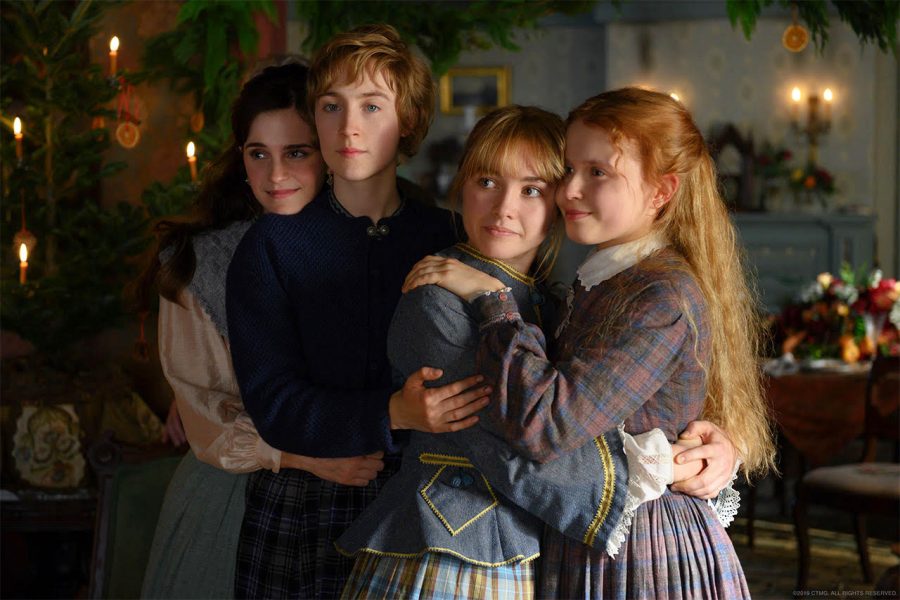‘Little Women’ strikes a chord
New film modernizes classic story
Fair use from: The four March sisters Meg (Emma Watson), Jo (Saoirse Ronan), Amy (Florence Pugh) and Beth (Eliza Scanlen) embrace each other on Christmas day in the new film “Little Women.” This version of “Little Women” is the fourth film adaption, among many other TV productions.
January 13, 2020
To say my experience watching the 2019 version of “Little Women” was a positive one would be a vast understatement. My excitement to see the film started long before I sat in the theater.
The star studded cast, well-crafted trailers, raving reviews and the touching source material had me optimistically curious to see what this new film had in store. Seated next to my own sister, it was a wonder to watch this film about family unfold.
The film follows the four March sisters, Meg (Emma Watson), Jo (Saoirse Ronan), Amy (Florence Pugh) and Beth (Eliza Scanlen) as they each grow, fight and learn to understand each other from childhood to young adulthood. The realism of their family dynamic from the slight bickering always happening in the background of scenes to the heartfelt and quiet moments was magical to witness. I felt like I was there watching a real family full of ambitious yet strikingly unique women interact with each other.
Although I thought every actress did an amazing job playing their respective characters, Florence Pugh was by far the biggest, and most shocking standout of the film. She took Amy — usually the most annoying and unlikeable sister — and brilliantly showed her development from an ambitious young girl to a wise, mature adult who holds her own in the world. She had the funniest lines, but also some of the most profound. Alongside the writing of the film, Pugh’s performance made the entire film better. Timothée Chalamet and Saoirse Ronan also elevated their roles of Laurie and Jo respectively.
Writer and director Greta Gerwig masterfully crafted “Little Women,” her second full length film, with creative transitions, interesting camera angles and clever blocking. The film featured an almost haunting color palette, alternating between warm glow on the screen to represent the nostalgia of childhood and innocence, and a colder, bleeker palette after the March sisters have grown up.
Alongside the phenomenal acting, writing and directing, the costume design was clearly well thought out. The costumes blended right into the story, immersing me into the seventeenth century. Each sister had their own primary color they wore; Jo wore red, Amy blue, Meg green and Beth purple. The coloring of the costumes seemed to stick with each the main personality traits of the primary sisters. So everytime that Jo wore blue, she was emulating her sister Amy. This creative and effective way to show how each sister influences the other was something very special to witness. Each sister obviously only loosely stuck to these costuming patterns, but the attention to detail was a joy to see and emphasizes my appreciation for the film.
This new version of “Little Women” brilliantly updated the historic source material and highlighted the importance the story still has today. I would recommend this film to every person, of any age or gender.
“Little Women”: ★★★★★




